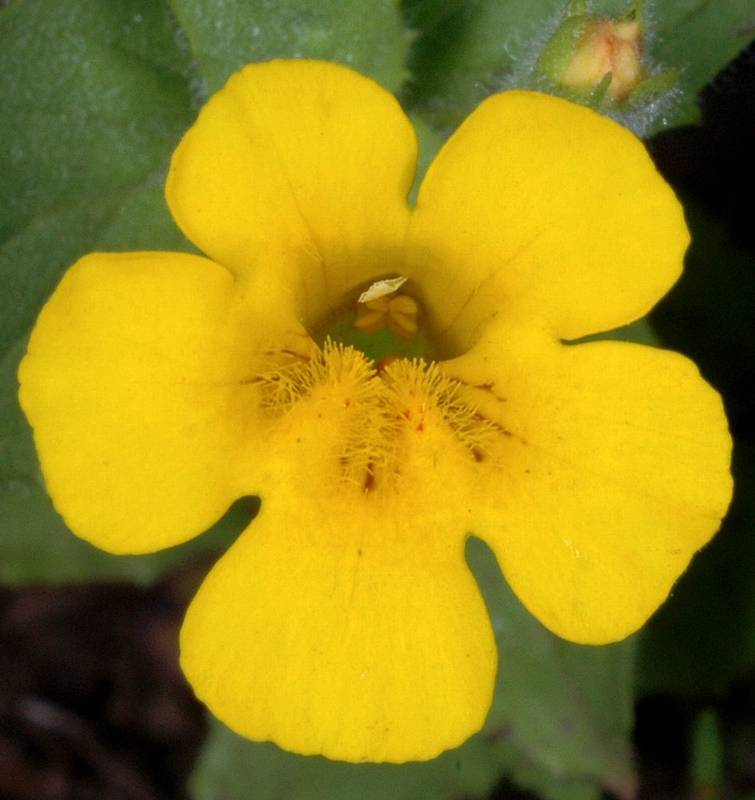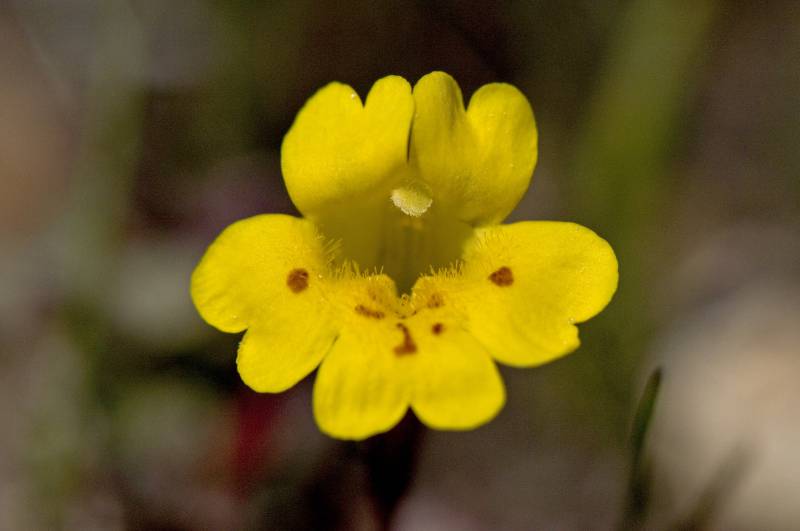Erythranthe moschata
Erythranthe primuloides
musk-flower, musk-plant
primrose monkey-flower
Leaves opposite, remotely toothed, pinnately veined, sessile or short-petiolate, the blade ovate to elliptic-ovate, 1-8 cm. long and 7-35 mm. wide.
Leaves opposite, crowded near the ground, short-hairy abaxially (underside), viscid to glabrous adaxially (upperside);
leaves oblanceolate, sessile, nearly entire, 3-nerved from the base, 7-25 mm. long and 3-11 mm. wide.
Flowers solitary in the leaf axils on long pedicels;
calyx 7-13 mm. long, viscid-villous, especially on the 5 rib angles, the 5 teeth pointed, 2-4 mm. long, the upper tooth a little larger than the others;
corolla 1.5-3 cm. long, yellow, often with some dark lines or dots, only slightly bilabiate, the tube nearly cylindrical;
stamens 4.
Flowers solitary on slender pedicels up to 10 cm. long arising from the leaf clusters;
calyx narrow, 4-8 mm. long, mostly glabrous, the 5 teeth short, equal;
corolla yellow, often dotted with maroon, 1-2 cm. long, scarcely bilabiate, the 5 lobes spreading, shallowly notched, the throat somewhat flaring;
stamens 4.
Capsule.
Capsule.
Erythranthe moschata
Erythranthe primuloides
- Local floras:
BC,
CA,
OR,
WA
- Local Web sites:
CalFlora,
CalPhotos,
Flora NW,
PNW Herbaria
WildflowerSearch
iNaturalist (observations)
- LBJ Wildflower Center
- SEINet
- Plants of the World Online
- Encyclopedia of Life
- Wikipedia
- Google Image Search
- Local floras:
CA,
OR,
WA
- Local Web sites:
CalFlora,
CalPhotos,
Flora NW,
PNW Herbaria
WildflowerSearch
iNaturalist (observations)
- LBJ Wildflower Center
- SEINet
- Plants of the World Online
- Encyclopedia of Life
- Wikipedia
- Google Image Search



